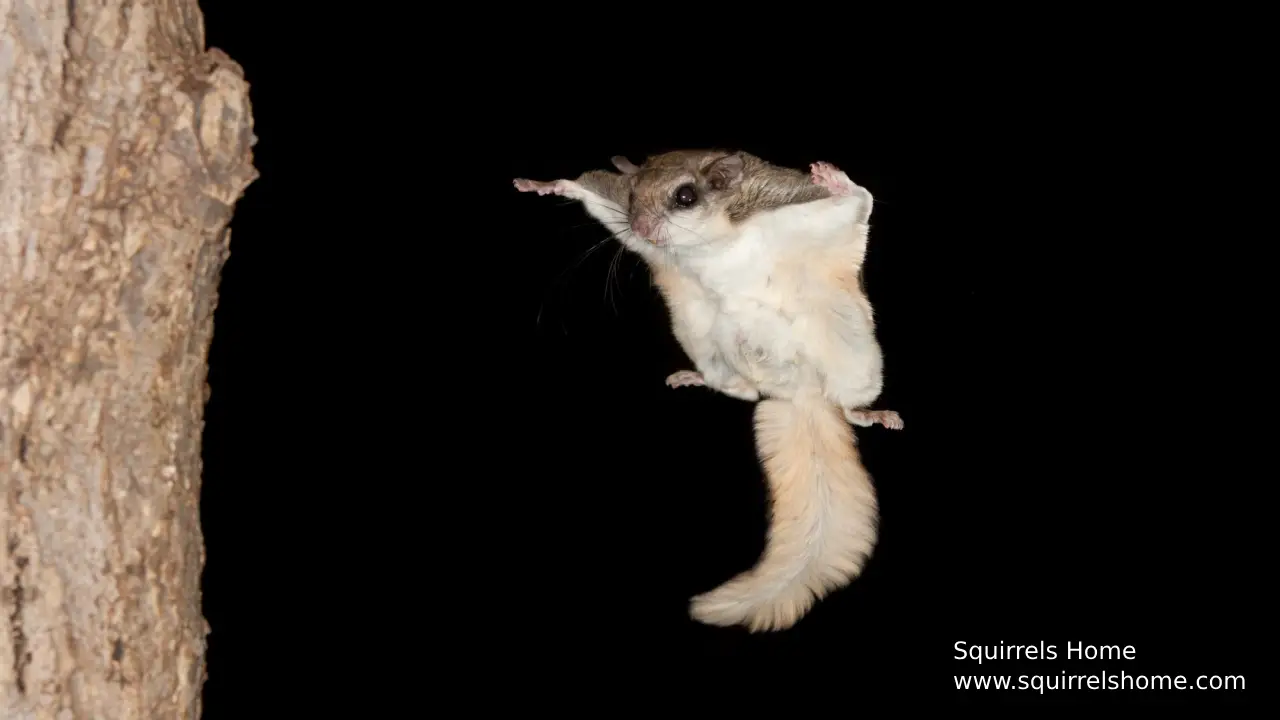Flying squirrels are amazing creatures with special body parts that help them move through the air. One of their most important features is the skin flaps they use to glide. These skin flaps, called the patagium, stretch from their wrists to their ankles, making gliding possible.
What Are Flying Squirrels’ Skin Flaps?
The patagium is a thin, flexible skin flap on each side of a flying squirrel’s body. This flap stretches between their front and back legs. It looks a bit like a parachute when they spread their legs wide while gliding.
The patagium is not just loose skin. It has special elastic fibers that help the squirrel control its glide. This structure allows them to stretch and tighten the flap, depending on how they need to move through the air.
How Do Flying Squirrels Glide?
Flying squirrels do not fly like birds or bats. They glide by jumping off high places and spreading their limbs. Their skin flaps catch the air, helping them stay in the air longer and travel farther.
When they jump, they stretch their arms and legs wide, which expands the patagium. This creates a flat surface, like a kite, that helps them glide instead of falling straight down. They can change direction by moving their legs and tail, which helps them land where they want.
Why Do Flying Squirrels Glide?
Flying squirrels glide for many reasons, mostly to stay safe and find food.
Gliding Helps Avoid Predators Gliding helps squirrels escape danger. If a predator, like a snake or an owl, gets too close, the squirrel can leap off a tree and glide to another.
Finding Food Flying squirrels also use gliding to find food. They often eat nuts, seeds, and fruits. Gliding lets them reach food in nearby trees without climbing down and back up.
How Do the Skin Flaps Help in Gliding?
The patagium is the key to a flying squirrel’s ability to glide. This skin flap works like a parachute to slow their fall and help them travel farther.
Creating Lift
When the squirrel jumps, air pushes against the patagium, creating lift. Lift is the force that helps the squirrel stay in the air longer and travel farther.
Controlling Movement
The elastic fibers in the patagium allow the squirrel to control how wide it spreads. This control helps with turning, slowing down, and aiming for a safe landing spot.
How Far Can Flying Squirrels Glide?
Flying squirrels can glide impressive distances for their size. Some can glide as far as 150 feet (about 45 meters) in one jump.
The distance depends on:
- Size of the patagium: Larger skin flaps catch more air.
- Height of the jump: Starting higher means more time to glide.
- Wind and air conditions: Wind can help or slow down gliding.
What Happens When They Land?
Landing is a key part of gliding. Flying squirrels prepare to land by lifting their tail and moving their limbs slightly back. This slows them down and helps them land softly.
Their feet have sharp claws that help them grip the tree upon landing. After landing, they often climb to another high spot to prepare for the next glide.
Are Skin Flaps Useful for More Than Gliding?
Yes, the patagium helps flying squirrels in other ways too.
Staying Warm
The patagium helps keep the squirrel warm in cold weather. The extra skin can cover part of the body, trapping heat.
Balance and Climbing
When not gliding, the skin flaps help with balance while climbing. They act like a stabilizer, keeping the squirrel steady.
Do Baby Flying Squirrels Have Skin Flaps?
Yes, baby flying squirrels are born with the patagium, but it is not fully developed at birth. As they grow, the skin flap becomes larger and more elastic, making gliding possible when they are old enough.
How Do Skin Flaps Help Avoid Injury?
The patagium acts like a brake, slowing down their fall. This reduces the impact when landing, helping avoid injuries from high jumps.
Conclusion
Flying squirrels are incredible gliders. Their special skin flaps, called the patagium, make this possible by working like a parachute to catch air and slow their fall. These skin flaps also help them avoid danger, find food, stay warm, and land safely. Nature has equipped these squirrels with amazing tools to survive.
FAQs
1. Do flying squirrels have wings?
No, they have skin flaps called the patagium that help them glide but not fly.
2. Can flying squirrels control their direction when gliding?
Yes, they can control their direction by moving their limbs and tail.
3. How do flying squirrels protect themselves from predators?
They use gliding to escape quickly from predators by jumping from high places.
4. Are all squirrels able to glide?
No, only flying squirrels have a special patagium for gliding.
5. What do flying squirrels eat?
They eat nuts, seeds, fruits, and sometimes small insects or bird eggs.
